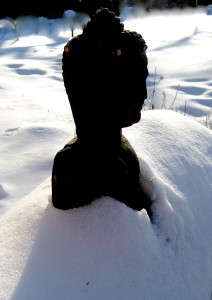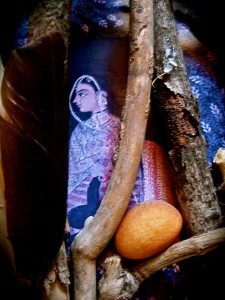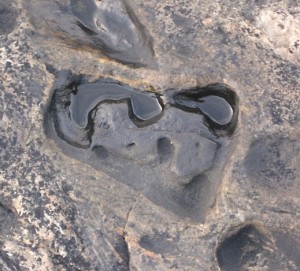
As Jeanne suggests in her Monday Message, the New Year is really but a marker allowing us Earthlings the opportunity to measure the passage of time, but if we are willing we can use it to change ourselves. This involves using intent, but it also involves utilizing the creative energy of nature inherent in all of us. A decision to move in a new direction is a creative act, but if our intentions are to have lasting effect we must be open to the wisdom of infinitesimal movement rather than broad sweeping jumps. In small but intentional, focused movement we support our intentions to change. In paying attention to what comes to guide us, whether from outside or from inside, and determining how best to use such guidance, we energetically and creatively propel ourselves along our path of change.
And so each year at this time we set our New Year’s resolutions. From my own experiences in setting resolutions, I already know that stating my intent alone has power, but if I really want to see and feel the change on a deeper and more immediate level, I know I must be attentive. I must become the creative process and all that it brings me, fully embracing every aspect of it.
If we look at nature’s intent we receive guidance, for nature has unbending intent, set so long ago it simply moves along at a steady pace. It is repetitive, and yet it is evolving as well. Nature does not look back nor is it given an opportunity to pause and reflect, it simply does its thing. We on the other hand, such brilliant creatures that we are, get stuck. We come up against things that nature never has to contend with. We come up against what we carry within us and what comes from without, seeking attention and attachment.
I consider such inner and outer interferences as tests, tests of our intent to change. In constantly restating our intent at the same time that we turn back to investigate our past—something that nature cannot do—we can track where we’ve been. We can study how we’ve attached in the past to inner and outer attachments and influences, and see how we’ve faltered or progressed. For instance, if I set my intent to follow the Middle Way, the path of balance in all aspects of my life and keep this intent uppermost as I go throughout my day, I will immediately begin to see what comes to both thwart and guide, for that which comes is both.
In alignment with the Middle Way, I am aware that everything that comes my way will offer both the opportunity to attach and the opportunity to detach, offering tests and guidance alike.

For instance, I decide to give up sweets in all forms because sugar pulls me off my intentional path. It interferes with my inner balance. But wouldn’t you know that the house is full of sweets. There is a beautiful carrot cake in the refrigerator that houseguests brought over the other night. I love carrot cake! I know that if I eat a piece of it I will have to suffer the consequences, and those consequences will be deep, especially now that I’ve decided to shift away from sweets. If I decide to leave it alone and let others eat it, I will have, for the moment, averted my first test of fortitude, my first test of detachment.
Change requires patience and discipline, but it also requires monitoring—that we remain aware on many levels. We must pay attention to how we have attached in the past so that we can learn how to detach as we walk our newly intentioned path. A decision to detach from an old habit or world means learning how to detach from an old self—for this is really all that we are contending with, ourselves and what we carry inside us.
Nurturing a new self requires constant attention. Moving along on our path of intent requires that we are constantly alert in a new and changing world, for that is what we are seeking to manifest as we set an intent to change. We are asking ourselves to live in a new world of our own creation. And such creation has its own energy of intent. Once set in motion there is no stopping it, for the intent of the creative is constant movement. Once set in motion we can expect the energy of creative activity to be in our lives. And although, as I mentioned, nature—even our own inherent nature—is programmed to move forward, we human beings must constantly stop and investigate ourselves if we are to really progress. To simply jump ahead and be something that we have not nurtured will not stand up to the test of time. If we are to really change, we must allow the intent of that change to carry us forward, infinitesimally.
As we take our steps each day now along our new paths of intent, we learn that we are our own biggest tests, that we carry within us all the attachments that we will ever need, that all we really need to do is go inward and ask our deeper selves what is right as we take our new path. Energy will appear out of nowhere seeking attachment; it’s how it works. It’s almost as if in setting our intent to change our energy is suddenly viable, tasty and appealing to others who may be lacking in energy. Suddenly we are wanted. That energy of attachment might come in old friends calling for contact, people we have not heard from in years suddenly manifesting. What do we do? What does it mean that they call us? Are we supposed to grant them something, is there something we have to offer them?
We must first determine if they are part of our new intent to change or if they are one of our tests of detachment? Usually, I turn inward, sit with my own energy and ask it if it wants to engage in an old world. I ask it if there is something I still need to get back there. I question if it’s right for me to use my energy in the past or if it’s better to turn forward into the new light of the New Year’s intent and detach with compassion and love, offering the new me an opportunity to take an infinitesimal step forward.
Sometimes it’s best to visit in the past to really understand why we are drawn there, to determine the truth of why we are being called back. Or can we state our new position in life and be accepted? Will our old friends understand that we have changed so much already and that we do not exist as that old self or in that old world? Do they understand what it even means to set an intent to change and evolve? Have we gone beyond certain people, not rejectingly so, but factually so?

We must, if we are truly changing beings, constantly remind ourselves to readjust our compasses and realign with the world we really want to live in. More questions will always arise as we are tested in our New Year’s resolutions.
At the same time that I turn inward and notice my energy, I remind myself of my creative energy, that which drives me to seek both the Middle Way and the experiences of the world I have been creating for myself for the past ten years or more. As I contemplate this creative changing self, I realize that my entire existence in this life has prepared me for this ultimate creative endeavor, and so I find that I cannot stop. My spirit is driving me forward now, as our spirit’s intent is what really pushes us to constantly change, not our mind’s intent, though they must work hand in hand, for we are human. And this is the Middle Way, the spirit and the mind working in alignment with the greater intent of our soul’s desire for growth.
And so, as the New Year really begins in earnest, as my intentions to deepen my spiritual path are given an opportunity to manifest a little bit more each day, I accept what comes to thwart and guide me. And if I happen to take a tiny piece of carrot cake, I will know that it is part of this process, that I will learn something necessary about myself from my decision. But then I will be like nature and move on, realigning with this process of creating my new self, once again on my path, for that is my intent. This is not a selfish endeavor, but a deeply spiritual endeavor, for I know that by my intent to constantly realign with my soul’s intent, I am influencing the energy of the intent of all soul’s to evolve.
Taking one more intentional, infinitesimal step along the Middle Way, and wishing you all good intentions for a very Happy Changing New Year,
Jan









